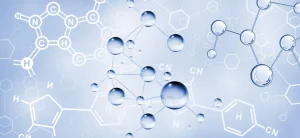What are the prerequisites for selecting a film-forming additive for waterborne polyurethane?
Prerequisites for film-forming additives selected for waterborne polyurethane:
(1) Film-forming additives are strong solvents for polyurethane, which can reduce the glass transition temperature of waterborne polyurethane and have good compatibility, otherwise it will affect the appearance and gloss of the film: in practice, the good and bad compatibility can be noted through the viscosity is greatly improved, compatibility is good, the viscosity decreases, the compatibility is bad, viscosity rises, and the more serious will be a gel.

(2) The solubility in water should be small, so it is easy to be adsorbed by the polyurethane particles and has good aggregation performance; its weak water solubility can also make it become the dispersant, surfactant and protective gel in water-based polyurethane.
(3) The film-forming additives should have a suitable volatilisation temperature, and be kept in water-based polyurethane before film-forming, with a volatilisation rate less than that of water, so that they can be kept in water-based polyurethane when water volatilises, and must be fully volatilised after film-forming.
(4) Easy to add waterborne polyurethane system and adsorption on the surface of polyurethane particles, and will not affect the overall stability of the waterborne polyurethane system.
To know the role of film-forming additives need to master the three-phase model of film-forming additives activity. Three-phase model is to describe the principle of action of film-forming additives model, film-forming additives in the system of water, polyurethane particles and waterborne polyurethane particles within the shell of the three-phase distribution of the existence of a certain relationship. The presence of a waterborne polyurethane particle shell is actually preferable because it is here that film formation takes place. If the film-forming additive is very soluble in water, it is mainly distributed in the water and naturally has little plasticising effect. If it is more distributed in the polyurethane particles, the effect on film formation is also very modest.
The suitability of a product for use as a film forming additive depends on its distribution in the dispersion, its plasticising effect on the polymer and its rate of evaporation. These evaluations are different for different dispersions and different for different applications, so there is no universal film forming additive.
The addition of additives to waterborne polyurethane resins is to improve the production process and product performance, such as giving waterborne polyurethane new, special properties, extending the service life of waterborne polyurethane, expanding the scope of application, improving the processing efficiency, accelerating the reaction process. There are many kinds of waterborne polyurethane additives, and the scope of use is very large, but the selection method of additives has certain rules.
1. The additives and products have to be compatible This is the first choice of additives to consider the problem. In principle, the requirements of additives and materials compatible (similar structure) and stable (no new substances generated) to exist in the material, otherwise it is difficult to play the role of additives.

2. Durability of additives additives in the material must be in a long time to maintain the original performance of the additives unchanged, and additives in the use of conditions, the ability to maintain the original performance is called the durability of the additives. Additives lose their original performance in three ways: volatilisation (molecular weight), extraction (solubility of different media), migration (solubility of different polymers). The additives should have water resistance, oil resistance and solvent resistance at the same time.
3. Adaptability of additives to processing conditions In the processing of materials, additives should not change its original properties and processing equipment and construction tools do not produce corrosion.

4. Adaptability of additives to the use of products Additives to meet the special requirements of the material in the process of use, especially the toxicity of additives.
5. synergistic and antagonistic effects of additives in order to get a better use of the effect, the use of additives are mostly used in compounding. The use of compounding, there are two kinds of cases: one is the use of compounding to achieve good results, the other is for a variety of purposes, such as both leveling and defoaming, both light and antistatic. It should be noted that: in the same material will produce synergistic effect between the additives (total effect is greater than the sum of the effects of separate use), sum effect (total effect is equal to the sum of the effects of separate use) and antagonistic effect (the total effect is less than the sum of the effects of separate use), so it is good to produce a synergistic effect when compounding and to avoid the antagonistic effect.

